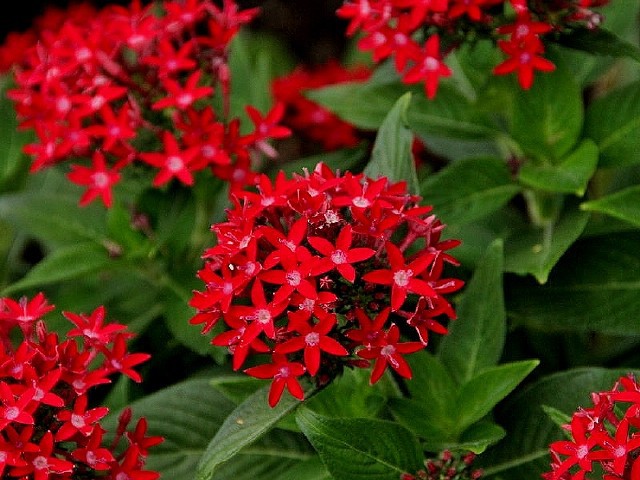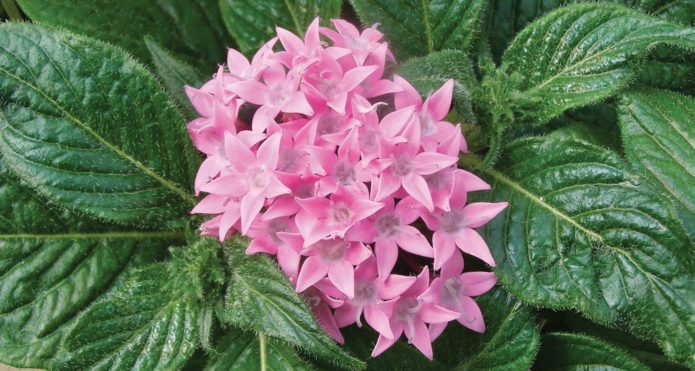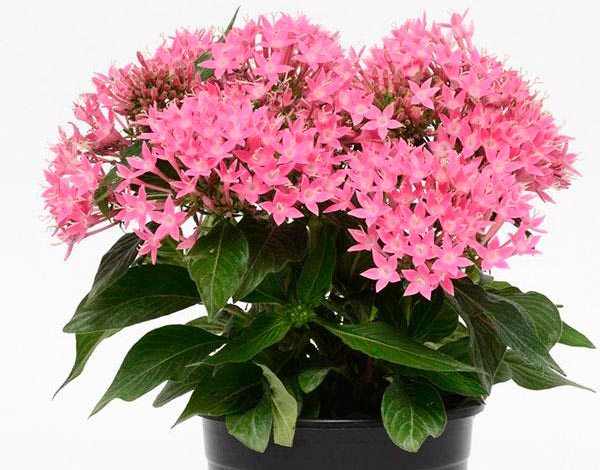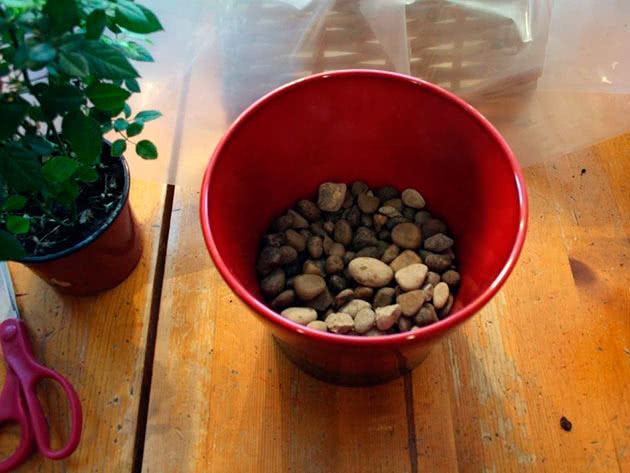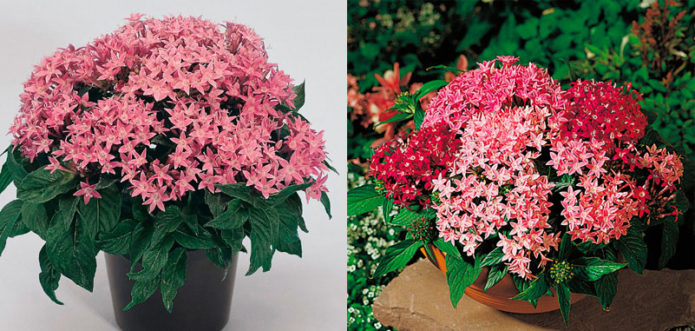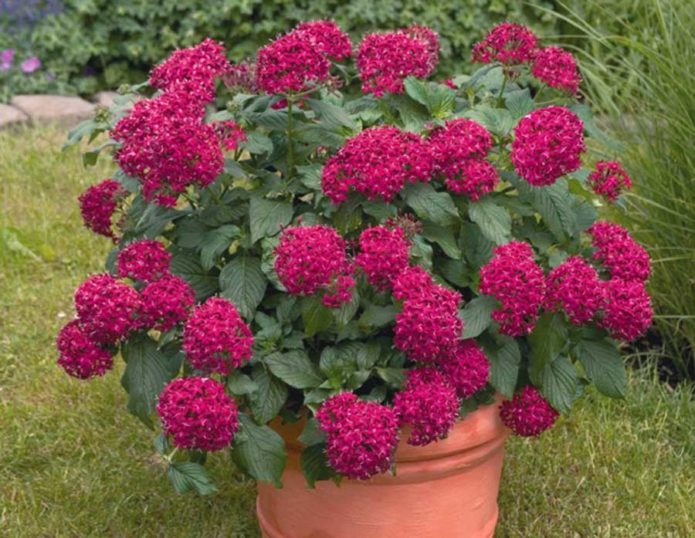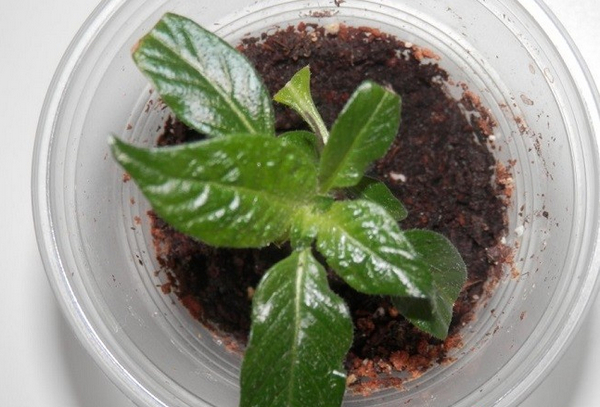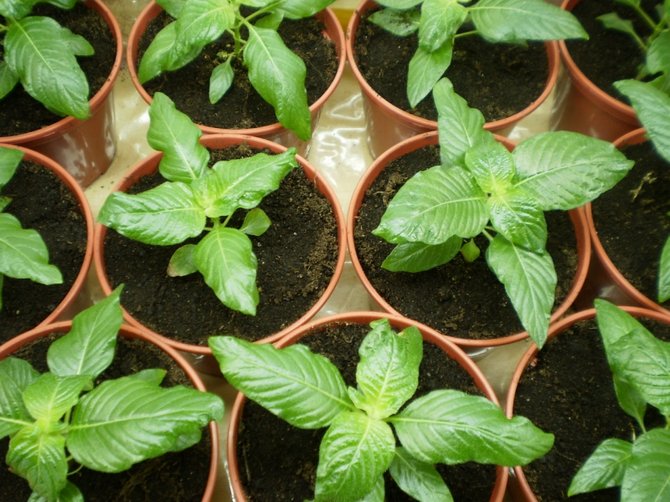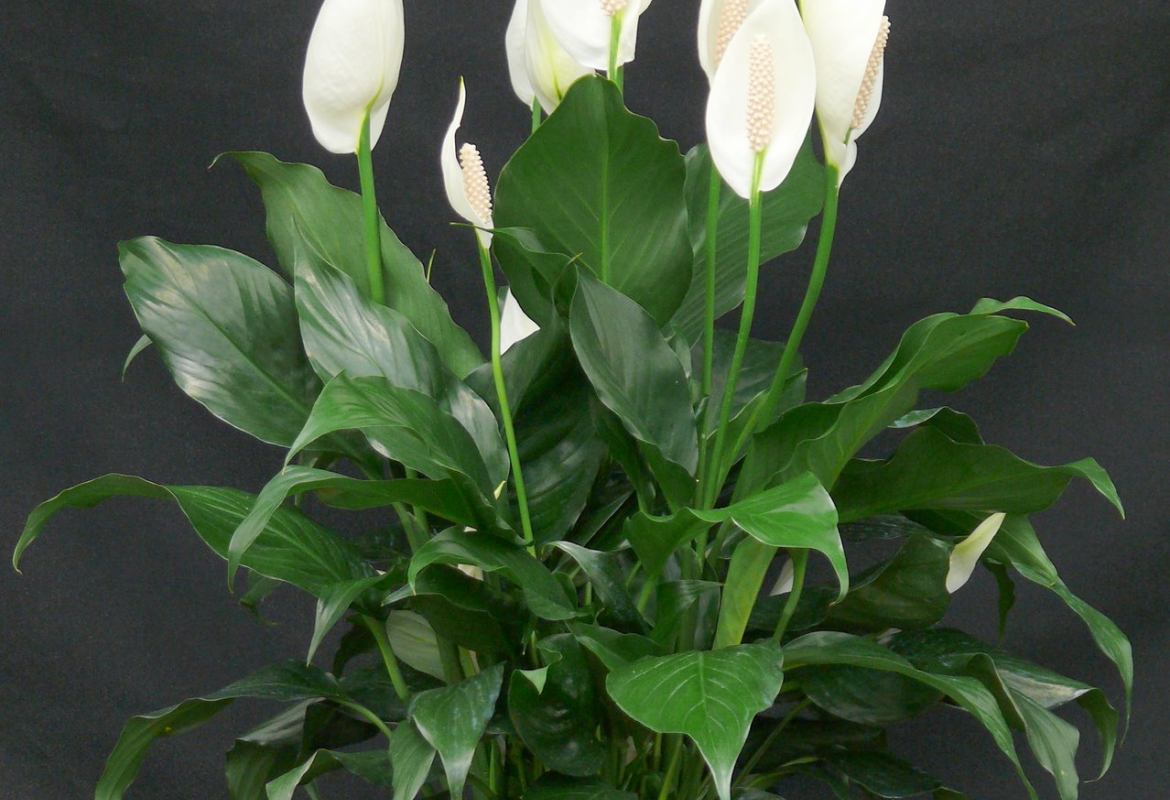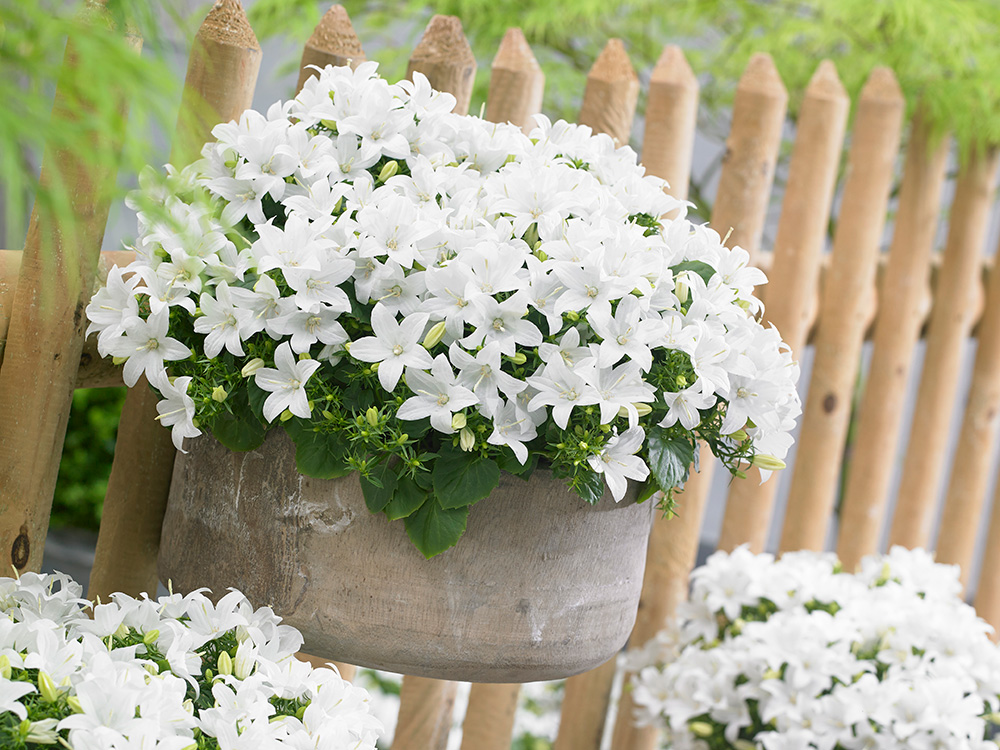Pentas is one of the few indoor plants that bloom in the cold season. Beautiful bright flowers with five petals, similar to stars, could please a person even in summer, and even more so in winter.
Content
What is different from the Egyptian star
Many people mistakenly believe that these are two different flowers. The Egyptian star is just another name for the plant. The number of rays on the flowers forms "pentas" (from the Greek penta - five). They are shaped like stars.
The word "Egyptian" indicates the origin of the plant, because it is native to North Africa.
What a pentas looks like: photo
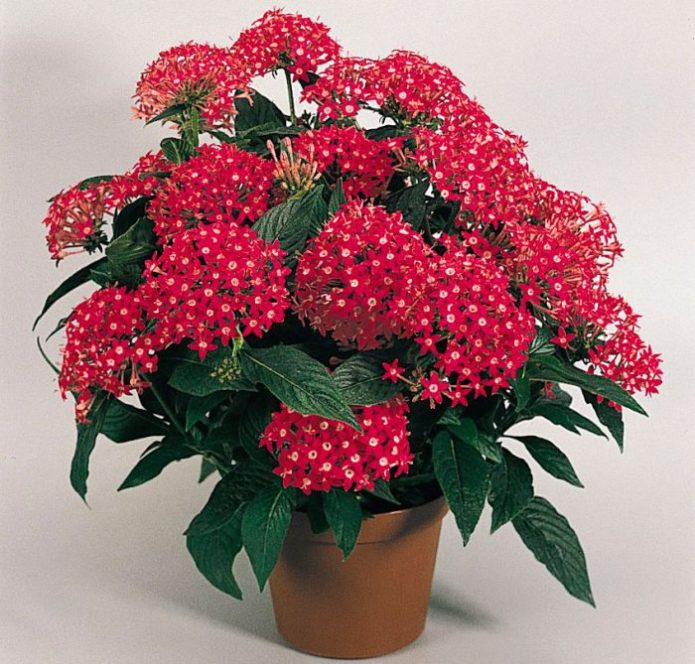
In some species, the core is different in color, in others it coincides with the color of the petals
It is a small bushy plant with bright or dark green (depending on the species) almond-shaped leaves. Their length is from 5 to 7 cm. The flowers are small, of the same size, collected in umbellate inflorescences of 20-30 pieces. The shade ranges from pale pink to burgundy.
Indoor views
In nature, this flower grows in the fresh air, but it loves heat very much and does not tolerate a cold climate. Therefore, in Russia and the CIS countries, it is customary to grow it indoors. If you plant a plant in a flower bed, then it becomes annual, and in the spring you will need a new seedling. The following types are suitable for indoor growing:
- Lanceolate - Its flowers can be white, pink, purple, red, burgundy or purple. The inflorescence is round, has a diameter of about 9–10 cm. The leaves are noticeably pubescent, often of a dark green color. The stem is stiff below. This type of flower is the most hardy.
- Butterfly is one of the lanceolate subspecies. It is distinguished as a separate variety because it is a hybrid. It blooms from spring to autumn.
- Bussei - This species has very dense inflorescences. The flowers are always pink with a slight orange tint. Leaves are smooth.
Table: conditions of detention at different times of the year
| Condition | Spring | Summer | Autumn | Winter |
| Temperature | 20-25 ° C (average room temperature) | 20-25 ° C | 20-25 ° C | 10-16 ° C (ideal for growing on a windowsill) |
| Watering | Reinforced (about twice as often as in autumn and winter) | Reinforced | Normal (when the ground dries up) | Usual |
| Location | Desirable - on the south window, with direct sunlight | |||
| Lighting | The flower needs the sun, but in the summer it should not be in the light all day, otherwise burns will appear on the leaves | |||
| Humidity | Like most indoor flowers, it needs a slightly higher humidity (about 60%), so spraying the leaves is a must | |||
| Transfer | It is advisable to replant once a year, but older plants can be left in one place for up to 2 years | |||
| Wind | Strong gusts of wind harm the plant, so you should not open the window on which it blooms, but the flower is not afraid of drafts | |||
How to plant and replant
These two processes do not differ in requirements. You need to transplant a flower every year, but if the plant is already elderly, then you can do it 2 times less often. The following conditions must be observed:
- It is best to use a ready-made substrate as a soil for planting. It is necessary to ensure that there are no salts in the composition - the plant does not like this.
- If you want to prepare the soil yourself, then you need to mix the leaf and sod soil with sand (proportion 2: 2: 1).
- The pot should be round. Diameter - from 12 to 15 cm. When transplanting, you do not need to increase the size of the container - the flower loves moderate constraint.
- There should be a dense layer of drainage at the bottom of the pot, since the Egyptian star does not tolerate stagnant water in the soil and soil acidification.
- A tray with a layer of moss is often placed under the pot. This allows you to maintain high humidity in the flowerpot. The moss should not touch the bottom of the pot.
Step-by-step instructions for transplanting
The transplant takes place according to the following algorithm:
- Take a pot of the same size as the previous one. The Egyptian star does not tolerate changes, but loves when her roots are a little cramped. Differences of 2 cm are acceptable, but no more.
- Prepare the drainage layer and soil. The composition must be the same as at the current landing site.
- The flower is carefully dug up, shaken off large clods of soil and immediately placed in a new pot. You do not need to use any solutions. The roots should not be washed either - the plant does not like moisture stagnation.
- After transplanting, the flower is rearranged for 2-3 days in a place where there is no direct sunlight.
- The leaves are sprayed with water daily, but only before the plant is returned to the window.
The flower adheres perfectly to the stem. By default, it does not need support. But with a lack of sun, the stem weakens over time, and then it may be needed. There are no special requirements for support - a regular stick with a garter is perfect.
How to care for a flower
In matters of watering and feeding, the Egyptian star can be called an unpretentious plant. But you should still know some features.
Watering and feeding depending on the season
Flowers must be watered according to 3 rules:
- If you want the plant to bloom in the warm season, then from the beginning of spring to the end of summer it needs to be watered quite often. You should not wait for the soil to dry completely.
- In autumn and winter, regardless of the flowering period, it is necessary to water only after the soil has got rid of moisture. But too rarely, this should also not be done, as the leaves may turn yellow.
- Regardless of watering, you need to spray the foliage every few days, but do not allow water to get on the inflorescences.
The plant is fed with mineral compositions with a high phosphorus content. There are no special requirements - the complex that is in any flower shop is enough.
How to achieve flowering
Fall-winter is the standard flowering period. But if watering is intensified in the spring, then the second stage will begin by summer. It is the frequent irrigation of the land that is the main condition in order to make the plant bloom in a hot season. Faded buds must be cut off.
How to care during a rest period
After the bush has faded, it must be moved to a cool place. In a private house, it can be a cellar or a basement, in an apartment - just a dark corner. After a month and a half, the plant is again placed on the window - first to the north, later to the south, thereby preparing for a new period of active growth.
Plant formation
The Egyptian star is quite picky in terms of development, it often tends to grow somewhere to the side. Therefore, they pinch unnecessary shoots. For a neat look, the flower is also cut from the top. The optimal tool is ordinary household scissors. The maximum plant height is 50 cm, but if it is higher, it will begin to "fall apart" and lose its bushy shape.
Common care mistakes
Common mistakes in caring for an Egyptian star and how to solve them:
- Insufficient watering. If you water the flower too rarely, the leaves will turn yellow and begin to wilt. It is quite simple to fix the problem: water more often and install a pallet with moss or expanded clay.
- Bad ground. If ordinary soil is used instead of a substrate, then the plant may begin to wither and dry out. The solution to the problem is obvious - just transplant it into a more suitable soil and water more often.
- There is too much sun. Even a thermophilic plant like the pentas can be damaged in summer. Typical burns appear on the leaves. At the first signs of this problem, the flower should be immediately removed from the window, and kept out of direct sunlight. Severely damaged leaves can be removed, but not all at once.
What the pentas is sick with
The most common flower diseases:
- Chlorosis of the leaves is the only disease of the species. The main symptom is yellowed leaves. You can fix the problem with fertilizers that promote the production of chlorophyll. They are bought at any flower shop.
- Curled leaves are a characteristic sign of aphids. You can get rid of it with the help of special chemical compounds, as well as folk remedies. The latter include a solution of laundry soap in water, ethyl alcohol or an infusion of onions. These means it is necessary to process the leaves. Severely damaged foliage should be removed.
- The appearance of a cobweb on the back of the leaves means tick infestation. Fighting them is the same as fighting aphids.
For the prevention of diseases, it is enough to regularly feed the flower and follow the basic rules of caring for it. The correct composition of the soil is also very important - without salts, with moderate acidity and a good drainage layer.
How to propagate
The plant is propagated by both cuttings and seeds. The first method is more suitable for the home, and the second for the garden.
Using cuttings:
- When a flower has a tall shoot, it is cut off. This not only prolongs the life of the plant, but also allows a new one to grow.
- The cut cutting is dipped in a solution for root growth for a few minutes.
- After taking it out of the composition, it is placed in a small pot. The soil in the container should be the same as that of an adult plant.
- Maintain high soil moisture so that the cutting can take root.
- After 1-2 months, the grown plant is transplanted into a pot about 10 cm in diameter, where it will develop in the coming year.
Propagation using seeds:
- The seeds are placed in a seedling tray or separate small pots. Enough 1 seed per container. The optimal sowing time is March or early April.
- Young shoots develop rather quickly, and in May they are transplanted into the ground.
- Before placing the plant in the soil, keep it in the root growth solution for several minutes.
Due to the winter blooming period, the Egyptian star is gaining more and more popularity. A person who has decided to start such a plant at home needs to study the peculiarities of growing and caring for it. It is quite unpretentious, but, like any flower, it needs the care of the owner. This should always be remembered when dealing with both indoor and garden plants.
